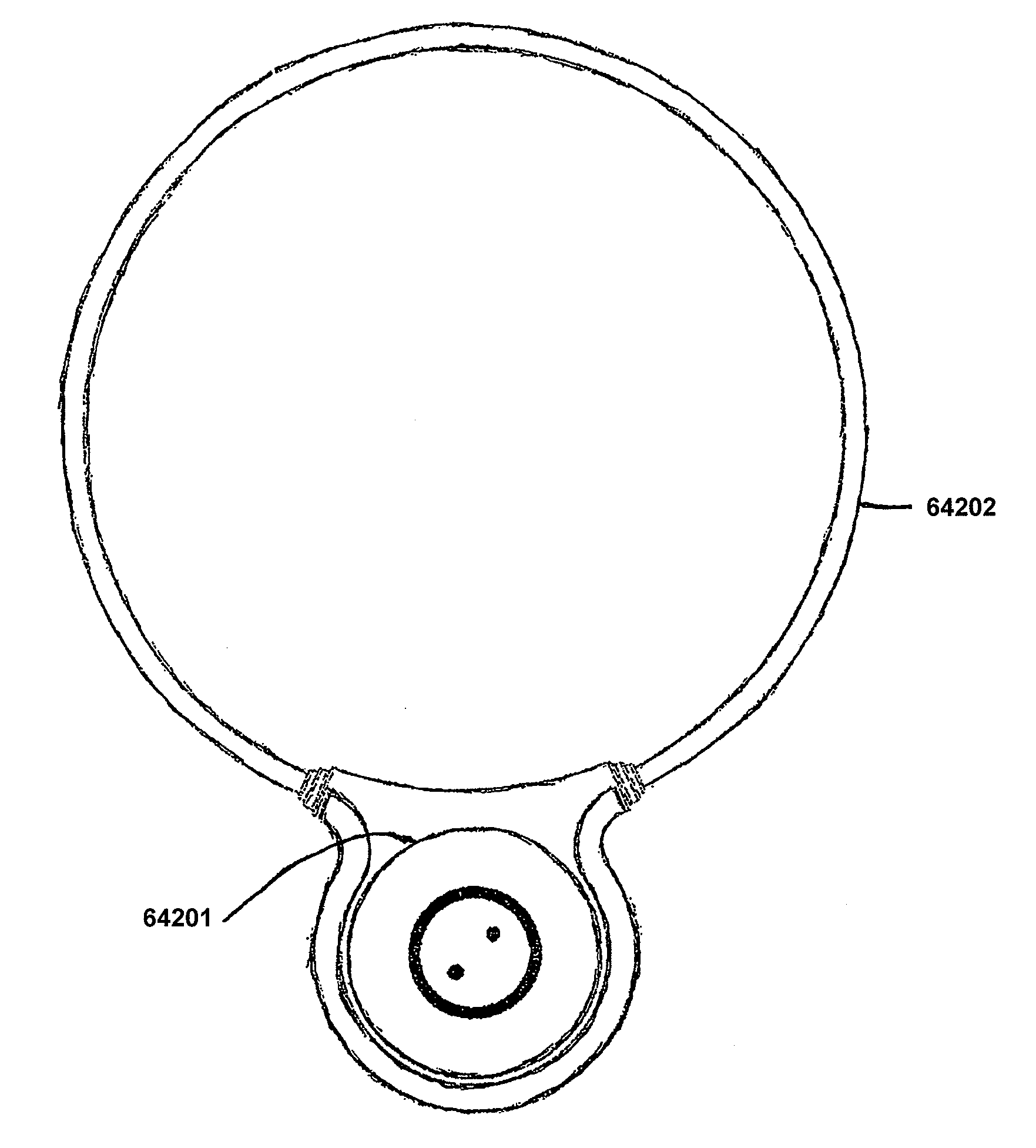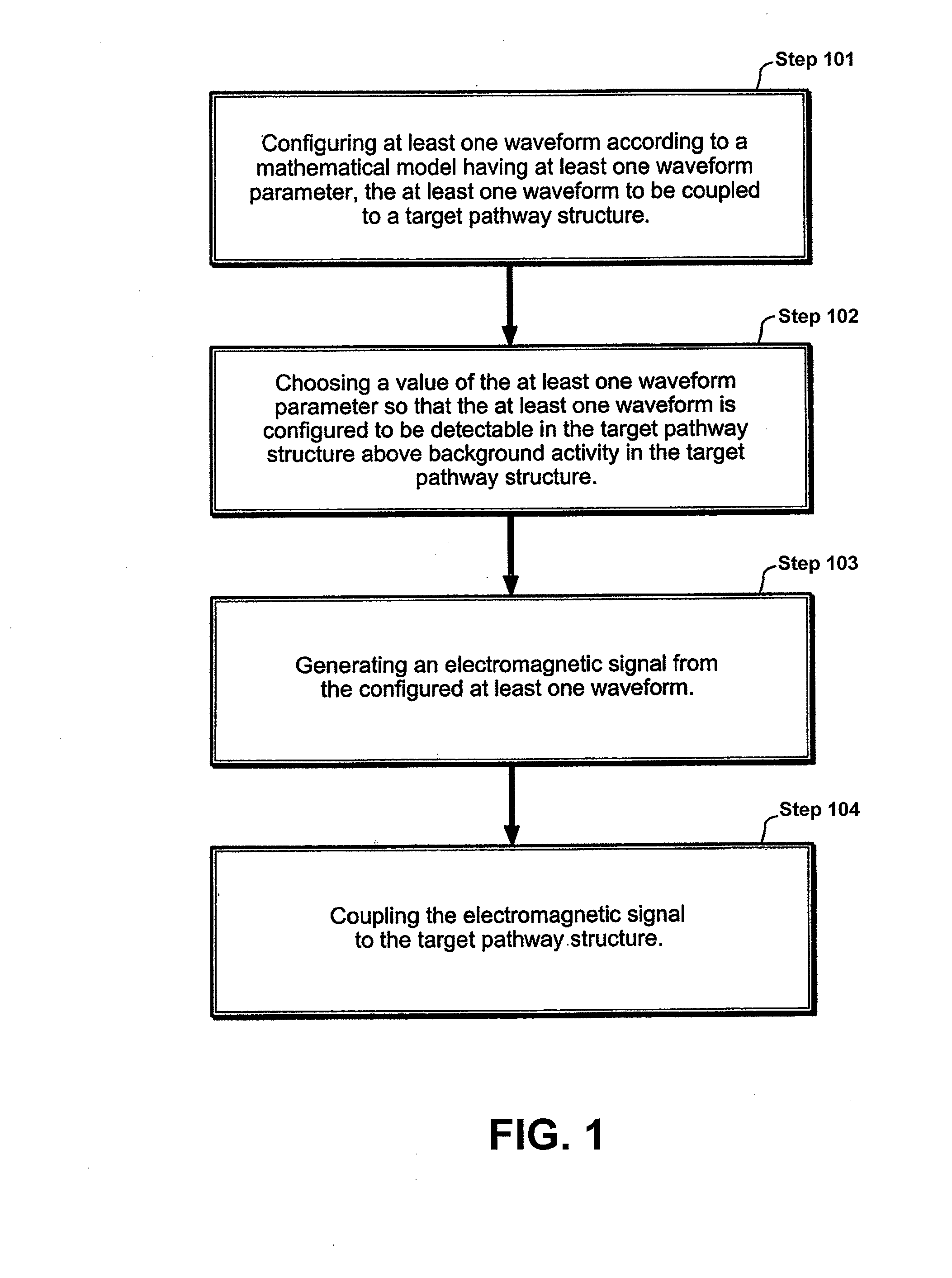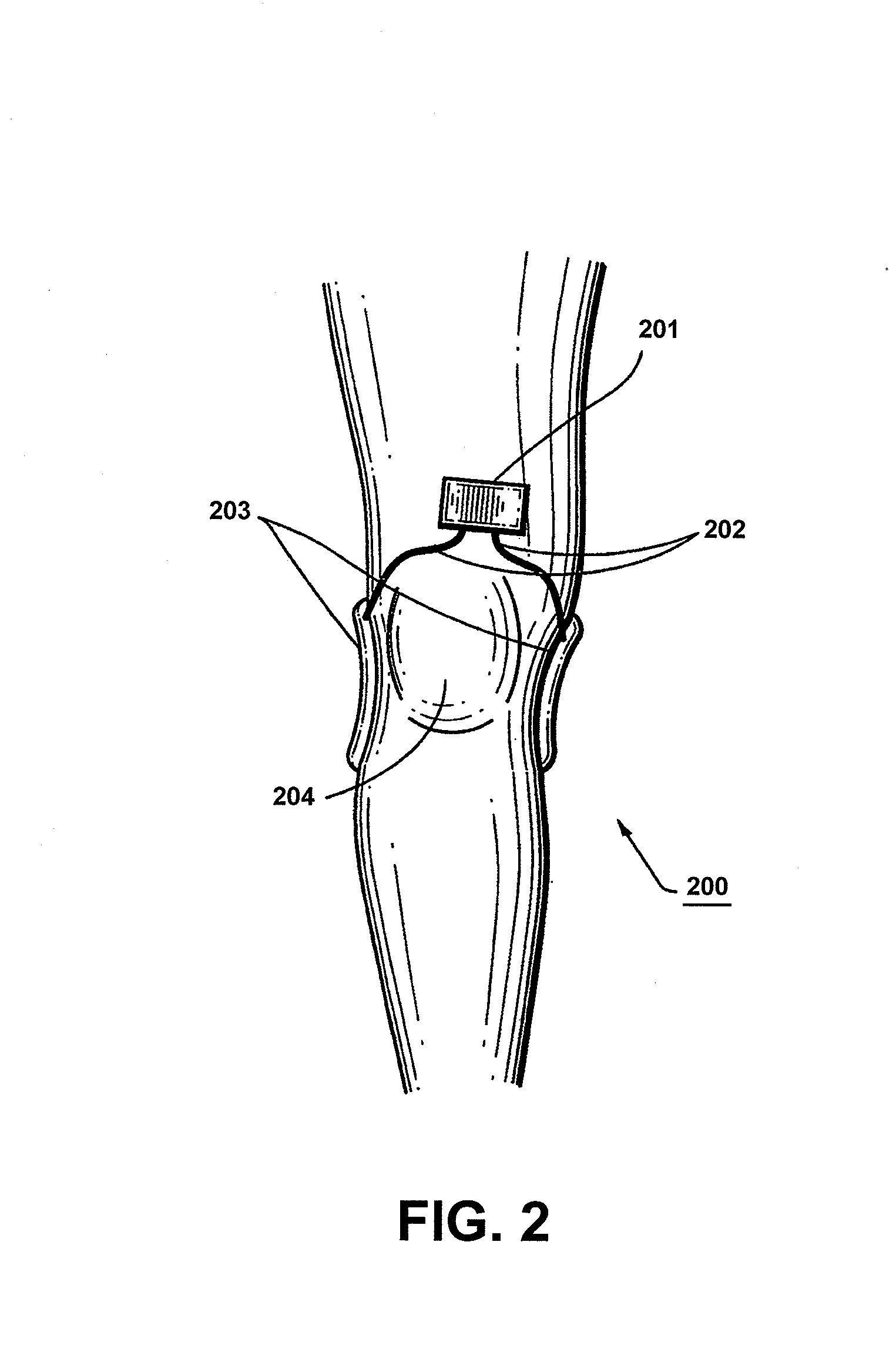Apparatus and method for electromagnetic treatment
a technology of electromagnetic treatment and apparatus, applied in the field of apparatus and method for electromagnetic treatment, can solve the problems of unfavorable treatment effect unfavorable treatment effect, etc., and achieve the effect of reducing power levels and reducing electromagnetic interferen
- Summary
- Abstract
- Description
- Claims
- Application Information
AI Technical Summary
Benefits of technology
Problems solved by technology
Method used
Image
Examples
example 1
[0749]The Power SNR approach for PMF signal configuration has been tested experimentally on calcium dependent myosin phosphorylation in a standard enzyme assay. The cell-free reaction mixture was chosen for phosphorylation rate to be linear in time for several minutes, and for sub-saturation Ca2+ concentration. This opens the biological window for Ca2+ / CaM to be EMF-sensitive. This system is not responsive to PMF at levels utilized in this study if Ca is at saturation levels with respect to CaM, and reaction is not slowed to a minute time range. Experiments were performed using myosin light chain (“MLC”) and myosin light chain kinase (“MLCK”) isolated from turkey gizzard. A reaction mixture consisted of a basic solution containing 40 mM Hepes buffer, pH 7.0; 0.5 mM magnesium acetate; 1 mg / ml bovine serum albumin, 0.1% (w / v) Tween80; and 1 mM EGTA12. Free Ca2+ was varied in the 1-7 μM range. Once Ca2+ buffering was established, freshly prepared 70 nM CaM, 160 nM MLC and 2 nM MLCK wer...
example 2
[0753]According to an embodiment of the present invention use of a Power SNR model was further verified in an in vivo wound repair model. A rat wound model has been well characterized both biomechanically and biochemically, and was used in this study. Healthy, young adult male Sprague Dawley rats weighing more than 300 grams were utilized.
[0754]The animals were anesthetized with an intraperitoneal dose of Ketamine 75 mg / kg and Medetomidine 0.5 mg / kg. After adequate anesthesia had been achieved, the dorsum was shaved, prepped with a dilute betadine / alcohol solution, and draped using sterile technique. Using a #10 scalpel, an 8-cm linear incision was performed through the skin down to the fascia on the dorsum of each rat. The wound edges were bluntly dissected to break any remaining dermal fibers, leaving an open wound approximately 4 cm in diameter. Hemostasis was obtained with applied pressure to avoid any damage to the skin edges. The skin edges were then closed with a 4-0 Ethilon ...
example 3
[0759]This example illustrates the effects of PMF stimulation of a T-cell receptor with cell arrest and thus behave as normal T-lymphocytes stimulated by antigens at the T-cell receptor such as anti-CD3.
[0760]In bone healing, results have shown that both 60 Hz and PEMF fields decrease DNA synthesis of Jurkat cells, as is expected since PMF interacts with the T-cell receptor in the absence of a costimulatory signal. This result is consistent with an anti-inflammatory response, as has been observed in clinical applications of PMF stimuli. The PEMF signal is more effective. A dosimetry analysis performed according to an embodiment of the present invention demonstrates why both signals are effective and why PEMF signals have a greater effect than 60 Hz signals on Jurkat cells in the most EMF-sensitive growth stage.
[0761]Comparison of dosimetry from the two signals employed involves evaluation of the ratio of the Power spectrum of the thermal noise voltage that is Power SNR, to that of t...
PUM
 Login to View More
Login to View More Abstract
Description
Claims
Application Information
 Login to View More
Login to View More - R&D
- Intellectual Property
- Life Sciences
- Materials
- Tech Scout
- Unparalleled Data Quality
- Higher Quality Content
- 60% Fewer Hallucinations
Browse by: Latest US Patents, China's latest patents, Technical Efficacy Thesaurus, Application Domain, Technology Topic, Popular Technical Reports.
© 2025 PatSnap. All rights reserved.Legal|Privacy policy|Modern Slavery Act Transparency Statement|Sitemap|About US| Contact US: help@patsnap.com



